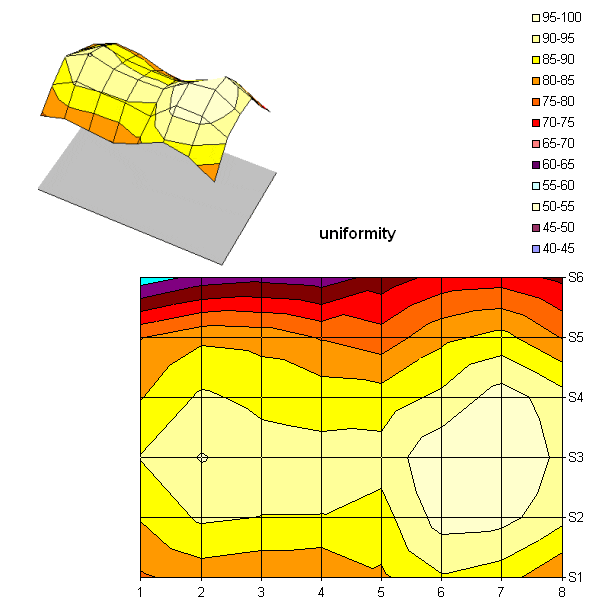20" LCD Monitors: XXL Displays
Spatial Uniformity
We measured the uniformity of the panel's lighting. For those of you who aren't used to the Tom's Hardware tests, we'll recall the method we use.
We set the panel at 50% brightness and 50% contrast and measure the uniformity of the lighting on a white image separated into 64 areas of equal size. The brightest point is considered to be 100%, and the previously measured black value is considered 0%, with the other values obtained distributed between them.
Unfortunately, the results here were poor. The upper part of the panel was really too dark, and you could detect that when the image was bright. Unfortunately, the picture format doesn't work in favor of this monitor for video, paradoxically enough, because without the black bands at the top and bottom of the image, the loss of brightness is quite visible in movies.
Color Rendering
We finally ran across a monitor with a glare filter that had good color fidelity, but unfortunately the panel's lighting lacked uniformity and the contrast was too weak for good viewing, especially in daylight. It's really a shame.
Fast But Not Very Accurate
Next, we measured the panel's actual latency.
Again we'll recall our method. The curve shows the different latency values for different levels of gray. A black-white alternation is shown on the curve by a point at X-axis 255, a black-gray alternation produces a point at X-axis 125, a black-dark-gray alternation shows as 50, etc.
Get Tom's Hardware's best news and in-depth reviews, straight to your inbox.
The official ISO latency rating specified by the manufacturer is only for black/white transitions (0/255). While the value we measured may agree with the manufacturer on this point, it's not of much value in judging the panel's actual responsiveness in practice.
The panel tested was very fast - almost as fast as the ViewSonic VX922, our reference panel. Specified at 6 ms, the panel tested at a good 10 ms, and sometimes less. The latency peak at between 75 and 100, once again, is the result of the use of poorly controlled Overdrive. The pixels took more than a frame to stabilize during transitions between very close shades, in this case black to dark gray.

